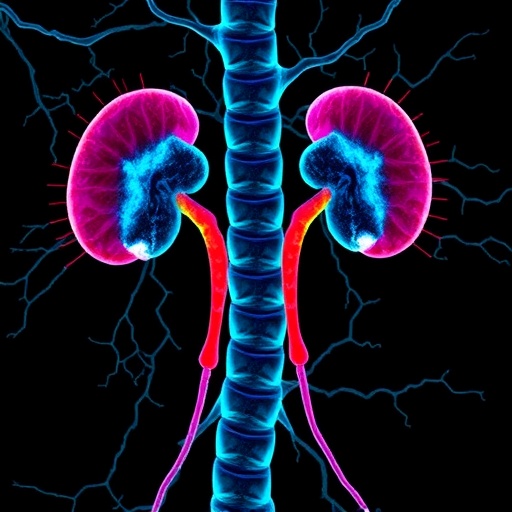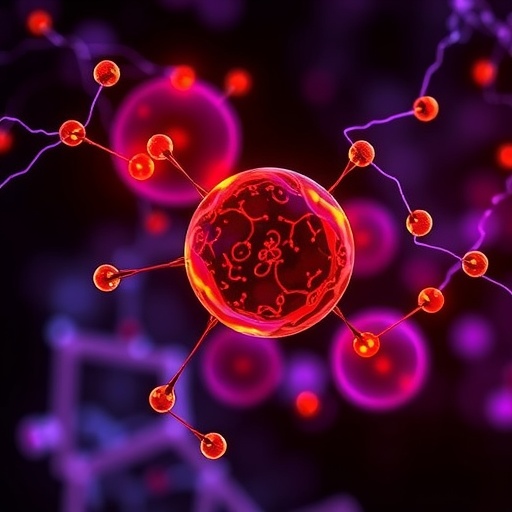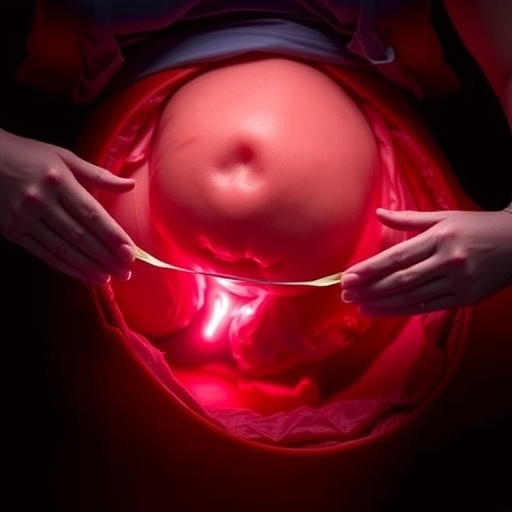Emerging research has unveiled groundbreaking insights into the protective mechanisms against sepsis-mediated renal injury, spotlighting a novel compound known as radioprotective 105. This study delineates how radioprotective 105 orchestrates complex intracellular pathways to mitigate the detrimental effects of oxidative stress and ferroptosis, highlighting a pivotal regulatory axis involving HO-1, SLC7A11, and GPX4. Such discoveries mark a significant leap forward in understanding the molecular underpinnings of sepsis-induced kidney damage, offering fresh therapeutic avenues in conditions long marred by high morbidity and mortality.
Sepsis, a critical systemic inflammatory response to infection, often precipitates acute kidney injury (AKI), complicating patient prognosis considerably. At the cellular level, this pathophysiological cascade involves heightened oxidative stress, lipid peroxidation, and programmed cell death subroutines such as ferroptosis—a regulated form of cell demise driven by iron-dependent lipid peroxidation. The intricate interplay between these molecular events disrupts renal cellular homeostasis, escalating tissue damage. Untangling these processes has become imperative for the development of novel interventions that address the root causes, rather than just the symptoms, of sepsis-triggered renal dysfunction.
Central to the new findings is the dual role of radioprotective 105 in modulating oxidative balance and ferroptosis inhibition. Previously characterized for its capacity to shield cells from radiation-induced damage, this compound demonstrates remarkable efficacy in dampening oxidative stress within renal tissues under septic conditions. Its modulatory effects extend to enhancing the expression of heme oxygenase-1 (HO-1), an enzyme known for cytoprotective, antioxidative functions. The upregulation of HO-1 catalyzes the degradation of pro-oxidant heme into biliverdin, carbon monoxide, and free iron, thereby conferring multifaceted cellular defense.
.adsslot_Aks8j23vIn{width:728px !important;height:90px !important;}
@media(max-width:1199px){ .adsslot_Aks8j23vIn{width:468px !important;height:60px !important;}
}
@media(max-width:767px){ .adsslot_Aks8j23vIn{width:320px !important;height:50px !important;}
}
ADVERTISEMENT
Equally critical in this newly elucidated mechanism is the role of the cystine/glutamate antiporter system Xc−, with SLC7A11 as a key subunit. This transporter maintains intracellular glutathione levels by facilitating cystine import, an amino acid essential for glutathione synthesis. Glutathione, a major antioxidant tripeptide, is indispensable for curbing reactive oxygen species accumulation and lipid peroxidation, effectively impeding ferroptosis. Radioprotective 105’s enhancement of SLC7A11 expression promotes glutathione replenishment, stabilizing cellular redox status amidst septic insult.
At the molecular signaling level, radioprotective 105 exerts additional influence over oxidative stress regulators. The compound modulates nuclear factor erythroid 2–related factor 2 (Nrf2) signaling, a master transcription factor governing antioxidant response elements. Activation of Nrf2 by radioprotective 105 potentiates the transcription of HO-1 and SLC7A11 genes, amplifying the cell’s antioxidative capacity. This pathway integration underscores the intricate crosstalk between redox homeostasis and ferroptosis control, positioning radioprotective 105 as a multifaceted modulator.
In vivo experiments further substantiate radioprotective 105’s therapeutic potential. Animal models of sepsis-mediated renal injury subjected to this treatment displayed markedly improved renal function parameters, decreased markers of oxidative damage, and reduced histopathological evidence of tubular necrosis. These phenotypic improvements align with biochemical data illustrating diminished reactive oxygen species and lipid peroxidation levels. Collectively, these findings suggest a promising translational trajectory for clinical application in septic AKI management.
The discovery bears clinical significance as current sepsis therapies largely focus on infection control and supportive measures, lacking specific interventions targeting ferroptosis and oxidative stress pathways. Radioprotective 105, by modulating the HO-1/SLC7A11/GPX4 axis, transcends symptomatic treatment and addresses the pathological sequelae at their molecular origins. This paradigm shift could redefine therapeutic strategies for sepsis-induced organ failure, particularly in the fragile milieu of critically ill patients.
Further exploration reveals potential combinatorial benefits when radioprotective 105 is paired with existing antioxidants or iron chelators. Such synergistic regimens could amplify protective effects, curtailing the vicious cycle of inflammation and oxidative damage characteristic of sepsis. Ongoing research aims to delineate optimal dosing, pharmacodynamics, and safety profiles, paving the way for clinical trials that could establish radioprotective 105 as a cornerstone therapy in intensive care settings.
Interestingly, this study also elucidates the temporal dynamics of ferroptosis in sepsis, noting an early surge in lipid peroxidation followed by progressive antioxidant depletion. Radioprotective 105’s intervention during this critical window effectively rescues renal cells, signifying the importance of timely therapeutic administration. This insight may influence biomarker development for early detection of ferroptosis and stratification of patients who might benefit most from such targeted therapies.
Beyond the kidney, the implications of modulating the HO-1/SLC7A11/GPX4 axis extend to other organs susceptible to septic damage, including the lungs and liver. The conserved nature of oxidative and ferroptotic pathways suggests a broader applicability of radioprotective 105, potentially attenuating multi-organ dysfunction syndrome (MODS), a leading cause of mortality in sepsis. Future multidisciplinary investigations will be key to harnessing the full therapeutic potential of this compound.
At a mechanistic level, the study bridges knowledge gaps between redox biochemistry and cell death modalities in inflammatory diseases. It highlights how ferroptosis is not merely a pathologic consequence but a modifiable process intertwined with cellular antioxidant defenses. Radioprotective 105 emerges as both a probe and a remedy, enabling researchers to dissect and manipulate these pathways with unprecedented specificity.
The research community is optimistic that such insights will catalyze the development of novel pharmacological agents tailored to modulate ferroptosis and oxidative stress with precision, minimizing off-target effects. Radioprotective 105 exemplifies a new class of molecules with targeted action on cellular defense circuits rather than broad-spectrum antioxidants that have shown limited success in clinical trials.
In summary, the study conducted by Duo, Yang, Luo, et al., published in Cell Death Discovery, paves the way for innovative therapeutic interventions in sepsis-associated renal injury. By unraveling the modulatory role of radioprotective 105 on the HO-1/SLC7A11/GPX4 axis, the research offers a beacon of hope for reducing sepsis mortality through targeted molecular therapy. This advancement not only enriches our understanding of ferroptosis regulation but also propels science toward effective clinical solutions against sepsis complications.
As this research progresses from bench to bedside, it heralds a new era in critical care medicine where modulation of cell death pathways becomes an attainable therapeutic goal. Radioprotective 105 stands at the forefront of this movement, promising to transform outcomes for millions affected by sepsis worldwide.
Subject of Research: The modulatory effects of radioprotective 105 on oxidative stress and ferroptosis in sepsis-induced renal injury via the HO-1/SLC7A11/GPX4 signaling axis.
Article Title: Modulatory role of radioprotective 105 in mitigating oxidative stress and ferroptosis via the HO-1/SLC7A11/GPX4 axis in sepsis-mediated renal injury.
Article References:
Duo, H., Yang, Y., Luo, J. et al. Modulatory role of radioprotective 105 in mitigating oxidative stress and ferroptosis via the HO-1/SLC7A11/GPX4 axis in sepsis-mediated renal injury. Cell Death Discov. 11, 290 (2025). https://doi.org/10.1038/s41420-025-02578-7
Image Credits: AI Generated
DOI: https://doi.org/10.1038/s41420-025-02578-7
Tags: acute kidney injury preventionferroptosis regulationHO-1 SLC7A11 GPX4 axislipid peroxidation in sepsisnovel compounds in renal protectionoxidative stress mitigationradioprotective 105renal cellular homeostasisresearch on sepsis mechanismssepsis-induced kidney damagesystemic inflammatory responsetherapeutic interventions for sepsis





